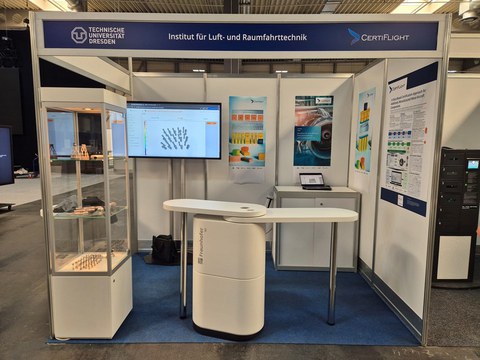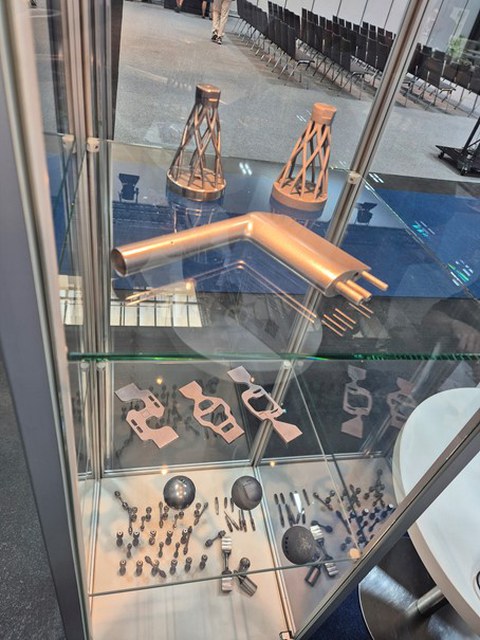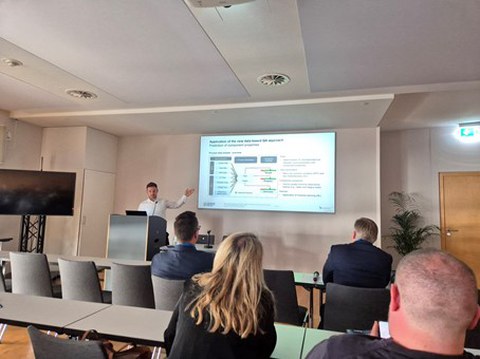May 26, 2025
Successful presentation of the CertiFlight research project at rapid.Tech 3D in Erfurt

Exhibition space of the Chair of Aircraft Technology at RapidTech3d 2025 in Erfurt
Together with partners from industry and research (Applus+ IMA, Fraunhofer IVI, INQUENCE, BTU Cottbus, AM Metals) the Chair of Aircraft Engineering of the TU Dresden is researching the safe use of additive manufacturing for metallic structural components in the aviation industry.

Im Laser-Pulverbettschmelzverfahren hergestellte Bauteile
The work in the BMWK-funded LuFo project CertiFlight is concerned with the development of a new type of quality assurance process for additively manufactured aircraft components using the laser powder bed fusion process. Quality assurance includes intensive data collection during the entire production chain, AI-based data analysis modules for defect detection during production and newly developed simulation methods for assessing the effects of detected defects on the component structure behaviour. In addition, the complex process of component certification for the aviation industry is being implemented in the form of a user-friendly platform. The developments were published in the ‘Progress in Additive Manufacturing’ journal with the technical article "A data-based certification approach for additively manufactured metal aircraft components".

Präsentation der Ergebnisse vor einem breiten Fachpublikum
The rapid.tech 3D exhibition and conference of the same name in Erfurt from 13 to 15 May 2025 was successfully used to present the CertiFlight project results to a wide audience of experts from science and industry in the field of additive manufacturing. The project consortium was represented by employees from Applus+ IMA, the Fraunhofer IVI and TU Dresden at the trade fair with an exhibition stand, a scientific presentation at the conference and at the exhibition.
The great interest shown by expert visitors to the trade fair stand focused in particular on issues relating to approval and the standardisation required for this, thus highlighting the topicality of the CertiFlight project. The novel approach to quality assurance makes a significant contribution to further improving understanding of the additive manufacturing process and thus increasing confidence in the innovative manufacturing technology for aviation applications.
We are confident about the future and look forward to further research projects that will contribute to the further establishment of additive manufacturing in aviation. This will be supported by the new impressions and new contacts.

